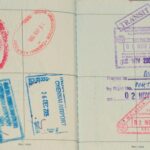With its warm climate, friendly English-speaking locals, and affordable lifestyle, it’s no surprise that the Philippines is a popular destination for foreign nationals. However, if you’re planning to settle in the country long-term, it’s essential to understand the immigration requirements for entering and residing in the country legally.
Who Can Move into the Philippines
Foreign nationals from around the world can move to the Philippines for various reasons. These typically fall into a few categories:
- Tourists who later decide to extend their stay
- Expats and employees working for Philippine-based or international companies
- Students enrolled in local universities
- Retirees looking for a lower cost of living
- Spouses or children of Filipino citizens
- Missionaries or volunteers affiliated with religious or humanitarian groups
You must apply for a specific visa or permit depending on your purpose for entering the country.
What Are the Requirements for Immigration
The immigration requirements to move to the Philippines vary based on your visa type, length of stay, and your country of origin. However, here are the general documents and conditions required: Basic Entry Requirements
- A valid passport (with at least 6 months of validity beyond your planned stay)
- A visa, if required by your nationality (many countries have 30-day visa-free access, but longer stays need a visa)
- Proof of onward or return travel, especially for tourists
- Sufficient funds to support yourself during your stay
For Long-Term Stay While entering the Philippines is relatively straightforward, legally residing there can be more challenging. You’ll generally need a valid reason for your long-term stay, which includes:
- Employment (Work Contract – 9G or Other Work Visa): You’ve been hired by a Philippine-based company and have a valid job offer or employment contract.
- Marriage to a Filipino Citizen (13A Visa): You’re legally married to a Filipino and are applying for permanent residency based on your relationship.
- Retirement (SRRV – Special Resident Retiree’s Visa): You’re choosing to retire in the Philippines and can show proof of adequate pension or retirement savings.
- Setting Up a Business (Investor or Special Visa): You plan to start or invest in a business in the Philippines, contributing to the local economy and creating employment.
- Education (Student Visa): You’ve been accepted into a Philippine school or university and plan to study there.
To legally reside in the Philippines, you must secure a visa and sometimes a special permit. Work Visa Philippines can help you gather the requirements, file with the appropriate government agencies, and obtain all the necessary legal documents. Bureau of Immigration Requirements In addition to a visa and special permit, you may also need the following:
- Alien Certificate of Registration (ACR I-Card), which is required for all foreign nationals staying beyond 59 days
- Visa extension approval or conversion to the appropriate long-stay visa
- Emigration Clearance Certificate (ECC) when exiting the country after a certain length of stay
- Annual Report for registered aliens (required every January–March)
How Do I Get These Immigration Requirements
Getting your immigration documents in order involves several steps, depending on your visa type and length of stay. Here’s a general outline:
- Check Visa Requirements
Start by checking whether your nationality requires a visa to enter the Philippines and what visa best suits your purpose (work, marriage, retirement, etc.).
- Apply for the Appropriate Visa
Submit your visa application before arrival (or convert your status while in the Philippines, if allowed). This process usually involves:
- Filling out the appropriate visa form
- Attaching the required documents (passport, photos, proof of employment, etc.)
- Paying the applicable fees
- Attending an interview, if required
Work Visa Philippines has a comprehensive list of guides on the different visa types and their requirements here on our website.
- Register with the Bureau of Immigration
If you plan to stay more than 59 days, you must register with the Philippine Bureau of Immigration and obtain an ACR I-Card, which acts as your official foreign resident ID.
- Stay Compliant by Filing Your Annual Report and Extending Your Visa if Needed.
Foreign nationals staying long-term must file an Annual Report with the Bureau of Immigration between January and March, and ensure their visa remains valid through timely renewals or extensions.
- Comply with Exit and Reporting Rules
Before leaving the country after a long stay, you may need an Emigration Clearance Certificate (ECC).
Final Thoughts
Moving to the Philippines is an achievable goal as long as you have a valid reason, such as employment, starting a business, marriage, or education. Be sure to apply for the appropriate visa and secure all necessary legal documents. Once you’ve become a resident, remember to stay compliant by maintaining good behavior, filing your annual report, and extending your visa when necessary.
Do You Need Assistance Getting Your Immigration Requirements?
Let Work Visa Philippines guide you through the process. Our experienced lawyers help you obtain a suitable visa, special permit (if applicable), and other legal documents from the appropriate government agencies. We’ll make sure you’re fully compliant so you can focus on enjoying your stay in the Philippines. Reach out today and we’ll guide you every step of the way.
- Contact Us Here
- Fill Out the Form Below
- Call us at +63 (02) 8540-9623






